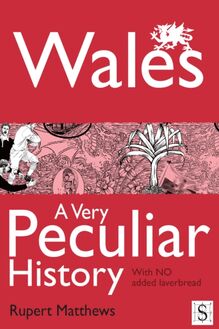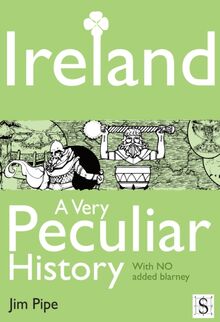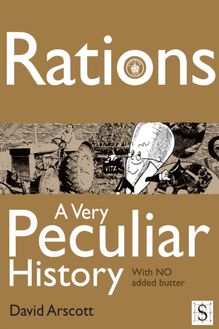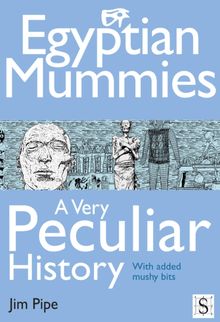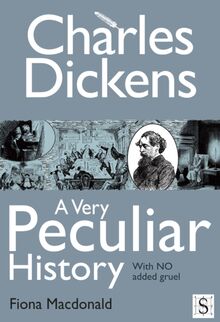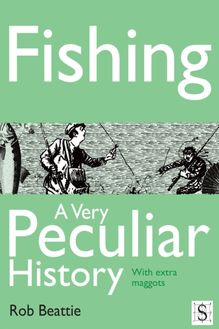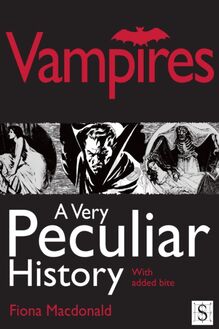-
 Univers
Univers
-
 Ebooks
Ebooks
-
 Livres audio
Livres audio
-
 Presse
Presse
-
 Podcasts
Podcasts
-
 BD
BD
-
 Documents
Documents
-
- Cours
- Révisions
- Ressources pédagogiques
- Sciences de l’éducation
- Manuels scolaires
- Langues
- Travaux de classe
- Annales de BEP
- Etudes supérieures
- Maternelle et primaire
- Fiches de lecture
- Orientation scolaire
- Méthodologie
- Corrigés de devoir
- Annales d’examens et concours
- Annales du bac
- Annales du brevet
- Rapports de stage
La lecture à portée de main
Vous pourrez modifier la taille du texte de cet ouvrage
Découvre YouScribe en t'inscrivant gratuitement
Je m'inscrisDécouvre YouScribe en t'inscrivant gratuitement
Je m'inscrisEn savoir plus
Vous pourrez modifier la taille du texte de cet ouvrage
En savoir plus

Description
Sujets
Informations
| Publié par | Andrews UK |
| Date de parution | 11 janvier 2012 |
| Nombre de lectures | 0 |
| EAN13 | 9781908759108 |
| Langue | English |
Informations légales : prix de location à la page 0,0300€. Cette information est donnée uniquement à titre indicatif conformément à la législation en vigueur.
Extrait
Title Page
KINGS & QUEENS, A VERY PECULIAR HISTORY
With added blue blood
Written by
Antony Mason
Created and designed by David Salariya
Publisher Information
First published in Great Britain in MMXII by Book House, an imprint of
The Salariya Book Company Ltd
25 Marlborough Place, Brighton BN1 1UB
www.salariya.com
www.book-house.co.uk
Digital edition converted and distributed in 2012 by
Andrews UK Limited
www.andrewsuk.com
Editor: Jamie Pitman
Assistant editor: Jodie Leyman
Artists: David Antram, Mark Bergin, Ray and Corinne Burrows, Simon Calder, Carolyn Franklin, John James, Mark Peppé
© The Salariya Book Company Ltd MMXII
All rights reserved. No part of this publication may be reproduced, stored in or introduced into a retrieval system or transmitted in any form, or by any means (electronic, mechanical, photocopying, recording or otherwise) without the written permission of the publisher. Any person who does any unauthorised act in relation to this publication may be liable to criminal prosecution and civil claims for damages.
Every effort has been made to trace copyright holders. The Salariya Book Company apologises for any omissions and would be pleased, in such cases, to add an acknowledgement in future editions.
Visit our website at
www.book-house.co.uk
or go to
www.salariya.com
for free electronic versions of:
You Wouldn’t Want to be an Egyptian Mummy!
You Wouldn’t Want to be a Roman Gladiator!
You Wouldnt Want to Join Shackleton’s Polar Expedition!
You Wouldn’t Want to Sail on a 19th-Century Whaling Ship!
Dedication
To my wife, Myriam, a treasured source of wise counsel, like her compatriot Philippa of Hainault, who persuaded her husband Edward III to spare the Burghers of Calais in 1347.
AM
The British National Anthem
God save our gracious Queen,
Long live our noble Queen,
God save the Queen:
Send her victorious,
Happy and glorious,
Long to reign over us:
God save the Queen.
O Lord, our God, arise,
Scatter her enemies,
And make them fall.
Confound their politics,
Frustrate their knavish tricks,
On Thee our hopes we fix,
God save us all.
Thy choicest gifts in store,
On her be pleased to pour;
Long may she reign:
May she defend our laws,
And ever give us cause
To sing with heart and voice
God save the Queen.
Ten peculiar royal facts
The British royal family has always been a bit of a mixed bag. Members of the family have been, or could be said to be:
1. Foreign: After the Normans, for over 300 years the kings of England spoke French as their first language. Henry V (1413–1422) may have been the first king to speak English with ease. The Hanoverian kings, starting with George I, spoke German. Even Queen Victoria used German at home, and never learnt to speak English perfectly.
2. Jumpy: During William the Conqueror’s coronation at Westminster Abbey, his guards massacred a crowd of Anglo-Saxon supporters: they mistook their cheers for a rebellion.
3. Spooky: The ghost of Catherine Howard, the executed fifth wife of Henry VIII, is said to haunt Hampton Court Palace, and is responsible for the name of the ‘Haunted Gallery’ there.
4. Suspect: When James II’s second wife gave birth to a son, there was suspicion that she was too old, and that someone else’s baby had been smuggled into the room in a warming pan. Thereafter, until the mid-20th century (up to the birth of Princess Margaret in 1930), all royal births had to be witnessed by the Home Secretary, a government minister.
5. Learned: King James I (VI of Scotland) wrote books on witchcraft, the dangers of tobacco and the duties of kingship.
6. Gross: Queen Anne had grown so large by the time of her death (swollen by body fluids from the condition called dropsy, now known as oedema) that she had to be buried in a coffin that was almost square.
7. Unlucky: William III died after his horse stumbled over a molehill in 1714. After this, supporters of the rival Stuart dynasty would raise a toast to the ‘velvet-coated gentleman’ (the mole).
8. Lucky: Queen Victoria survived seven assassination attempts.
9. Measured: The old imperial measurement, the yard, was said to be based on the distance between Henry I’s nose and his outstretched fingertip.
10. Well connected: Queen Elizabeth II can trace her ancestry back over 1,000 years to Alfred the Great, the first King of England, who ruled from AD 871 to 899.
Putting Royalty on the Map
1. Buckingham Palace, London
2. Balmoral Castle, Scotland
3. Sandringham House, Norfolk
4. Palace of Holyroodhouse, Edinburgh
5. Castle of Mey, Scotland
6. Windsor Castle, Berkshire
7. Osborne House, Isle of Wight
8. Brighton Pavilion, East Sussex
9. Kew Palace, London
10. Winchester, Saxon capital of Wessex
11. Scone, first capital of Scotland
12. Canterbury Cathedral, Kent
13. Sherwood Forest, Nottinghamshire
14. Berkeley Castle, Gloucestershire
15. Oxford Castle, Oxfordshire
The elements of the Royal Coat of Arms have been gradually put together since the time of Richard I ‘The Lionheart’ in the 12th century. The symbols on the shield show the three lions of England, the lion of Scotland and the harp of Ireland. The ‘supporters’ are a lion (for England) and a unicorn (for Scotland).
‘Honi soit qui mal y pense’ (‘Shame be to him who thinks evil of it’) is the motto of the Order of the Garter: tradition holds that Edward III said this when gallantly picking up a lady’s fallen garter at a dance.
‘Dieu et mon droit’ (‘God and my right’) refers to the divine or God-given right of the monarch to govern.
Introduction
Britain is still ruled by a Queen. Well, ‘ruled’ may not be quite the right word, but she is Head of State, and she still has a considerable amount of influence over the way Britain is run. Some 1,200 years ago, when our story begins, kings had the power to do just about anything they liked. They were nice only if they wanted to be, but generally got their way through force, general bullying, and perhaps murder and mayhem – if no-one murdered them first.
Over those 1,200 years the power of the kings and queens of Britain has been gradually whittled away. Today, Britain is governed primarily by Parliament, and the people have a choice about who governs them, which they exercise through elections. It took centuries of struggle to reach this point, because the kings and queens were not going to give up their powers voluntarily. One – Charles I – was so obstinate he ended up having his head chopped off.
So, we can vote for our government. But nobody votes for the monarch. Instead, the hereditary principle controls who will be the next king or queen. It’s usually the eldest son of the current king or queen; if there is no son, it is the eldest daughter. Not very democratic, you might say. But it is, in that British citizens, in general, accept this as the way things are done. It has been done like this for hundreds of years, and they don’t want to change it. There are plenty of people who wonder if this is fair or right: republicans argue that the whole idea of monarchy is wrong. But then you ask who you would want instead as a Head of State. Another elected politician as a President? Arguments about getting rid of the monarchy usually end there. There is just is no alternative that is as good.
The Queen provides continuity. Other, elected rulers come and go. Since she has been on the throne, a dozen Prime Ministers have passed through her doors. She is able to advise her ministers using the benefits of over 50 years of experience. Because she has reigned so long, she is also probably one of the best-known and most respected heads in the world today. That’s quite an advantage on the world stage.
It is a role that is deeply embedded in history, and is surrounded by age-old ceremony, ritual and pageant. These are important symbols of British identity, and powerful stimulants for feelings of national pride.
Yet Britons still feel they have a choice. The Queen rules with their permission. If ever a deeply unpopular king or queen inherited the throne, the monarchy might come to an end there and then, and 1,200 years of history would be tossed out of the window. This might not be entirely unwelcome to members of the royal family themselves. Would you want the job?
Queen Boudicca
A famous symbol of British resistance to foreign invasion, Boudicca (or Boadicea to the Romans), was a warrior queen in the early days of Roman occupation. Her husband was the king of the Iceni tribe of Norfolk. When he died, the Romans tried to annex the Iceni lands, stirring up a revolt led by Boudicca. Her forces sacked Roman settlements in Colchester, St Albans and London, wiped out the 9th Legion and killed some 70,000 Romans before Boudicca was captured. She committed suicide rather than be taken to Rome in chains.
King Arthur
The stories of King Arthur and the Knights of the Round Table form a magnificent set of folk tales centring on his legendary castle of Camelot. Where was Camelot? Some say the West Country of England, which was under attack from Saxon invaders in the 6th century AD; some say Brittany. Some claim he was King of the Britons, in southern Scotland, and that his capital was Edinburgh – hence the mountain in Edi
-
 Univers
Univers
-
 Ebooks
Ebooks
-
 Livres audio
Livres audio
-
 Presse
Presse
-
 Podcasts
Podcasts
-
 BD
BD
-
 Documents
Documents
-
Jeunesse
-
Littérature
-
Ressources professionnelles
-
Santé et bien-être
-
Savoirs
-
Education
-
Loisirs et hobbies
-
Art, musique et cinéma
-
Actualité et débat de société
-
Jeunesse
-
Littérature
-
Ressources professionnelles
-
Santé et bien-être
-
Savoirs
-
Education
-
Loisirs et hobbies
-
Art, musique et cinéma
-
Actualité et débat de société
-
Actualités
-
Lifestyle
-
Presse jeunesse
-
Presse professionnelle
-
Pratique
-
Presse sportive
-
Presse internationale
-
Culture & Médias
-
Action et Aventures
-
Science-fiction et Fantasy
-
Société
-
Jeunesse
-
Littérature
-
Ressources professionnelles
-
Santé et bien-être
-
Savoirs
-
Education
-
Loisirs et hobbies
-
Art, musique et cinéma
-
Actualité et débat de société
- Cours
- Révisions
- Ressources pédagogiques
- Sciences de l’éducation
- Manuels scolaires
- Langues
- Travaux de classe
- Annales de BEP
- Etudes supérieures
- Maternelle et primaire
- Fiches de lecture
- Orientation scolaire
- Méthodologie
- Corrigés de devoir
- Annales d’examens et concours
- Annales du bac
- Annales du brevet
- Rapports de stage



